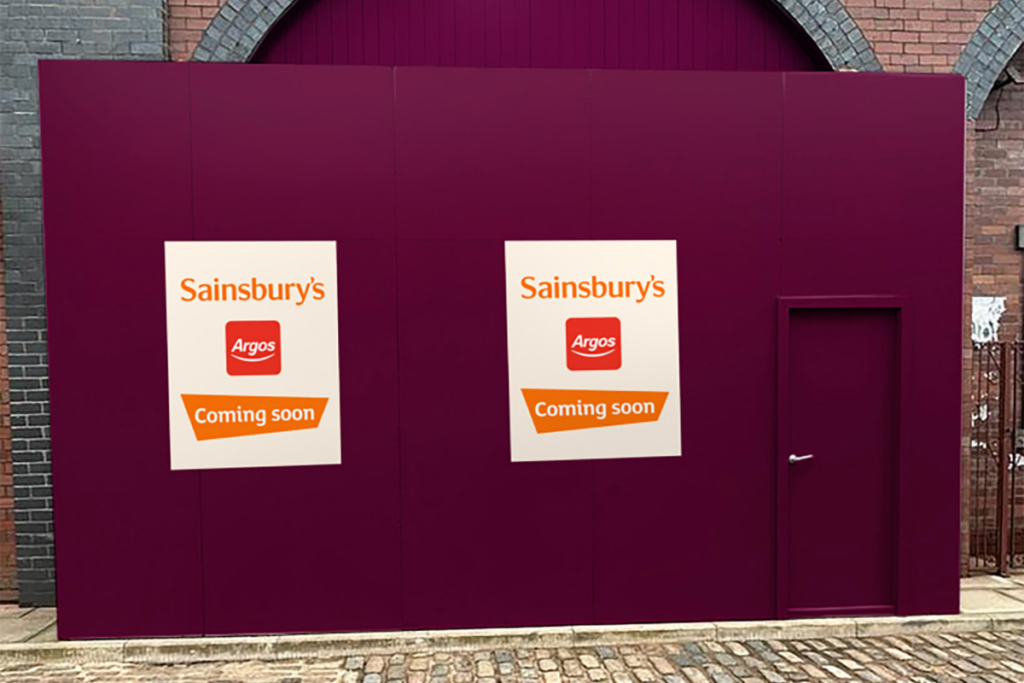Despite an unkind year for the British retail industry, which saw the likes of Debenhams, Mothercare, Jack Wills and Bonmarche fall into administration and M&S booted out of the FTSE 100 for the first time, retailers have raised their festival advertising budgets.
Several retailers released Christmas adverts in the run up to their “golden quarter” – the period of the year when stores make the vast majority of their profits – with a record £6.8 billion spent on festive advertising.
It’s no doubt that Christmas adverts can be engaging, whether it’s in-store, online, print or radio. In fact, shoppers are expected to spend a colossal £80 billion in the final six weeks of the season alone, according to findings by the Centre for Retail Research report for VoucherCodes.
David Chandler, managing partner at production company The Gate, told Retail Gazette that “the retail sector has seen a very strong selection of ads this year”.
He added that uncertainty has resulted in low customer confidence this year, so “fun and festive ads are particularly effective” given the circumstances.

The pressure is on for retailers to surpass the expectations of the public year on year, with big-budget adverts from Sainsbury’s, Ikea, Amazon and of course John Lewis already taking over screens, billboards and social media.
Ash Bendelow, creative partner at agency Brave, said TV adverts were a way for retailers to set themselves apart from their rivals. He said John Lewis added an “emotional appeal” to its adverts in a bid to stand out, which may be effective as emotions run high during the festive period.
Last year, John Lewis’ Christmas advert centred around the life of superstar musician Elton John, from being gifted a piano during his childhood to discovering his musical talent. The “emotional appeal was an effective way to connect with consumers” according to Bendelow, who believes John Lewis set out to create an advert that was “far beyond the festive season”.
This year, the retailer’s Excitable Edgar advert, which was its first combined campaign with stablemate Waitrose, became its biggest hit since Monty the Penguin according to The Drum, reaching nearly nine million YouTube views in two weeks.
https://www.youtube.com/watch?v=r9D-uvKih_k&feature=emb_logo
Despite the adverts’ popularity, John Lewis Partnership’s sales took a major hit for the week ending November 23 – the first full week of trading since Excitable Edgar was released -which could suggest that Christmas adverts don’t necessarily translate to sales.
During that week, overall sales for the parent company of John Lewis and Waitrose plunged 28.4 per cent year-on-year, from £380.03 million down to £272.20 million. The partnership attributed the plunge to tough comparisons to 2018, when Black Friday fell on an earlier date.
However, Andrew Watkinson, content director at shopper marketing specialist SMP, argued that the retailer was losing relevance in its much-hyped Christmas campaigns.
“This year there’s been a degree of negativity surrounding Edgar the Dragon’s excitable behaviour,” he said.
“In trying to move away from the over-sentimentality of previous campaigns, it appears the store may have lost its connection with the audience.
“All you need to do to have a great Christmas ad is engage the imagination and mood of the public”
“Time – and more importantly sales – will tell, but perhaps the audience is tired of John Lewis monetising its ads.”
John Lewis and German discounter Aldi have begun selling merchandise that resemble characters from their 2019 Christmas advert in a bid to drive sales. John Lewis put plush toys of Edgar the dragon on sale in stores and online, while Aldi’s iconic Kevin the Carrot character was sold was sold out on the first day of release – only to be resold for over £4000 on eBay.
“All you need to do to have a great Christmas ad is engage the imagination and mood of the public and this doesn’t cost the earth,” Watkinson said.
“Aldi, for example, has run the same character campaign for the last three years.
“Kevin the Carrot may not be the most elaborate animation, but it must be working and increasing revenue.”
https://www.youtube.com/watch?v=T37-A2JdaEk
In its advert, Aldi made an effort to showcase a range of low-priced foods in a luxury setting, which Chandler believes “completely nails the message of what the brand offers, which is key when customers are being cautious with their money”.
Meanwhile, according to Bendelow, Ikea’s Silence the Critics advert – which featured a grime soundtrack by D Double E – “did an amazing job reminding us that Christmas is not all about the food and the gifts, it’s also about being proud to host your loved ones in your home”.
Watkinson also argued that retailers shouldn’t necessarily depend on TV adverts to boost golden quarter sales, but rather “incorporate experiential and retail activations in their Christmas campaign at the expense of TV”.
He said that as well-established retailers continue to pour vast amounts of money into Christmas TV adverts, “smaller brands will likely have to explore more options beyond the small screen”.
“Retailers need to be smart and think about how their Christmas message stays consistent”
Aron Caplan, strategy director at customer agency Lida, said the reason many retailers release Christmas TV adverts was due to the fear of missing out.
“It’s got to the stage where so many believe they have to get that ‘Christmassy’ feeling of nostalgia across, that the advertising messages are becoming detached from their brands,” he said.
“There is nothing wrong with Christmas advertising. However, retailers need to be smart and think about how their Christmas message stays consistent, with all-year-round themes.”
Nevertheless, it can be argued that one of the challenges that retailers face nowadays is the change in consumer behaviours around consumption. With Netflix and Amazon Prime subscriptions increasing in popularity, many consumers don’t watch live TV as frequently as they once did – which means they’re able to skip TV adverts.
While online fashion retailer Asos has not released a Christmas advert, its website and app offers discounts, and it sends out regular emails to its subscribers to remind them of sales.
As online is usually where customers begin their gift-giving journey, it makes sense that retailers turn to digital platforms to advertise their Christmas campaigns.
Chandler told Retail Gazette that although consumers enjoy Christmas adverts on TV, “it doesn’t take long for the excitement of the ads to wane, as consumers get bored of the ads by the time December arrives”.
Arguably, digital adverts are easier to update, with apps such as Asos putting out new designs each week to stand out. While investing in TV adverts can boost Christmas sales as it’s a prime opportunity to stand out and be seen, there are retailers that, due to a unique offering, don’t need them.
Yet as many retailers use nostalgia in their Christmas adverts to boost appeal – such as Sainsbury’s campaign celebrating its 150th year and Tesco’s time-travelling advert to mark 100 years – they risk losing relevance in terms of what they are trying to sell. When adverts are consumed as completely separate products from their core offering, it doesn’t necessarily equate to effective advertising.
Click here to sign up to Retail Gazette’s free daily email newsletter


















